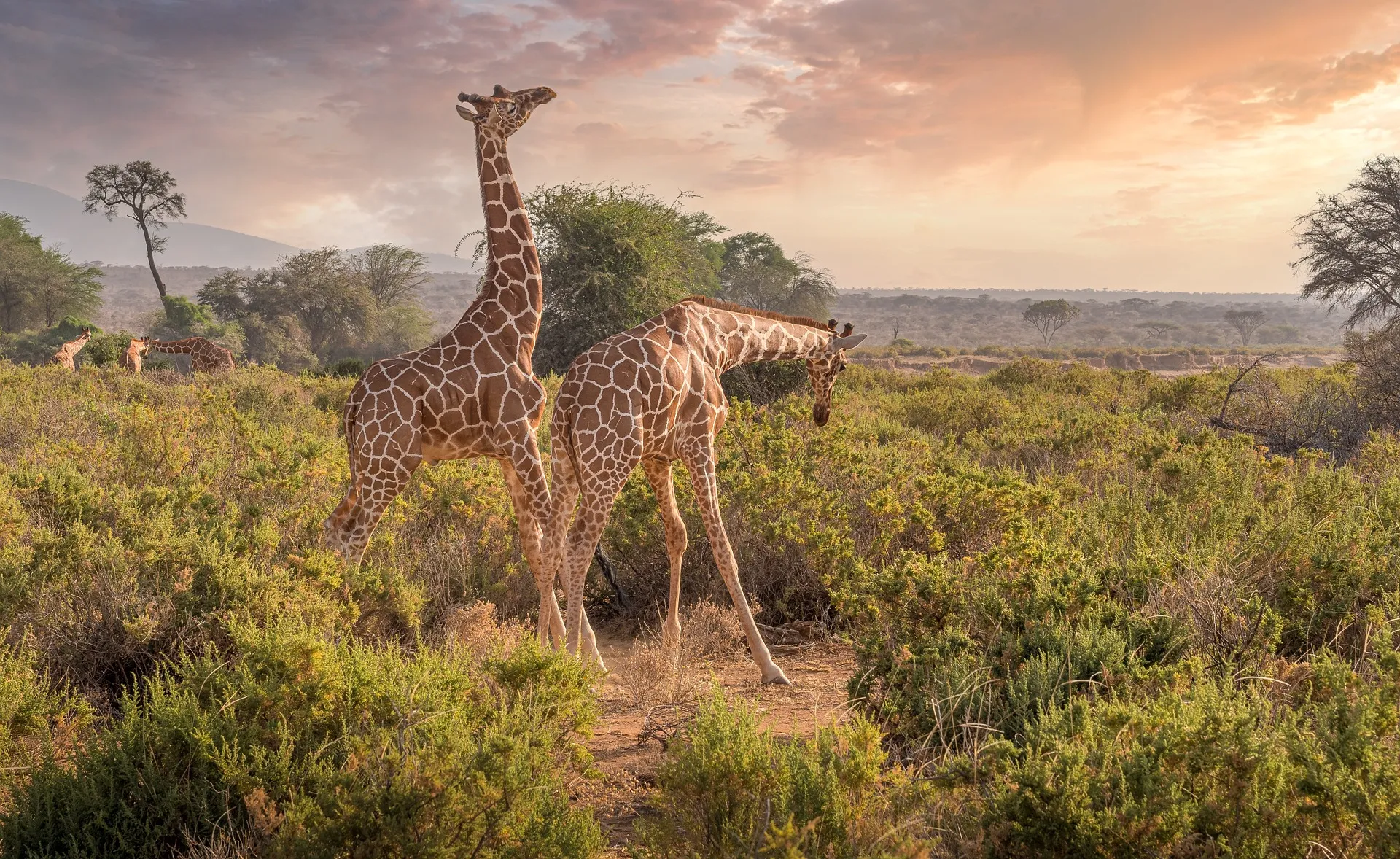The Maasai Mara National Reserve — often called the “Jewel of Kenya” — is one of the most spectacular wildlife destinations on earth. Known for its vast savannahs teeming with wildlife, including the Big Five and the dramatic Great Migration, the Maasai Mara attracts thousands of visitors each year.
Whether you’re a wildlife photographer, an adventure seeker, or simply a lover of nature, the Maasai Mara offers an unforgettable experience.
Table of Contents
Where is the Maasai Mara?
The Maasai Mara is located in southwestern Kenya, along the border with Tanzania.
About 270 km (167 miles) from Nairobi.
It covers an area of about 1,510 square kilometers (583 sq mi).
It forms the northern extension of Tanzania’s Serengeti National Park.
History of the Maasai Mara
Established as a wildlife sanctuary in 1961.
Originally about 520 sq km, it expanded over time to its current size.
Named after the Maasai people and the Mara River that runs through it.
The Maasai have coexisted with wildlife here for centuries, grazing their cattle alongside lions and elephants.
Geography & Climate
Landscape:
Endless savannahs dotted with acacia trees.
Rolling hills and riverine forests.
The Mara and Talek rivers cut through the reserve.
Climate:
Warm days, cool nights.
Two rainy seasons: April–May (long rains) and November (short rains).
Dry season: June to October — best for wildlife viewing.
Wildlife of the Maasai Mara
The Maasai Mara boasts an astonishing diversity of wildlife, making it one of Africa’s premier safari destinations.
The Big Five:
1. Lion — The most iconic predator of the savannah.
2. Leopard — Often seen lounging in trees.
3. Elephant — Large herds roam the plains.
4. Buffalo — Grazing in marshes and grasslands.
5. Rhinoceros — Black rhinos are rare but present.
Other mammals:
Cheetahs — Fastest land animals, often hunting gazelles.
Hippos & crocodiles — Found in rivers.
Giraffes, zebras, wildebeests, gazelles, hyenas, jackals, and more.
The Great Migration
One of nature’s greatest spectacles:
Over 1.5 million wildebeests, 200,000 zebras, and 500,000 gazelles move from Tanzania’s Serengeti into the Maasai Mara between July and October.
They cross the Mara River, facing crocodiles and predators, in search of fresh grazing.
This is considered the 8th Wonder of the Natural World.
Birdlife in the Maasai Mara
With over 450 bird species, the Mara is also a birder’s paradise.
Ostriches, vultures, and secretary birds.
Crowned cranes and lilac-breasted rollers.
Birds of prey such as eagles and hawks.
The Maasai People & Their Culture
Who are the Maasai?
Semi-nomadic pastoralists known for their red shukas (robes) and beadwork.
Speak Maa language (plus Swahili and English).
Their culture emphasizes cattle, which they consider sacred.
Visiting a Maasai Village:
Many tours include visits to a Manyatta (village).
Learn about their traditions, dances, and way of life.
Buy handmade jewelry and crafts.
Safari Experiences in the Maasai Mara
Game Drives:
Morning and evening drives in 4×4 vehicles.
Chance to see predators hunting and herds grazing.
Hot Air Balloon Safari:
Fly at dawn for a breathtaking aerial view of the savannah.
Walking Safaris:
Guided walks with rangers to explore flora and smaller creatures.
Night Drives:
Some private conservancies offer nocturnal safaris to spot elusive animals.
Best Time to Visit the Maasai Mara
- July–October: Peak season during the Great Migration.
- December–March: Good for predator sightings and fewer tourists.
- Avoid April–May if possible (heavy rains).
Accommodation: Camps & Lodges
The Mara offers a range of stays:
Luxury lodges: &Beyond Kichwa Tembo, Mara Serena Safari Lodge.
Mid-range camps: Ashnil Mara, Fig Tree Camp.
Budget-friendly: Enchoro Wildlife Camp, Mara Explorers.
Private conservancies: Exclusive and less crowded options.
How to Get to the Maasai Mara
By Air:
Flights from Nairobi’s Wilson Airport to Mara airstrips (approx. 45 minutes).
By Road:
Approx. 5–6 hours from Nairobi by car or bus.
Roads can be rough — 4×4 vehicles recommended.
Travel Tips for the Maasai Mara
1. Pack light, neutral-colored clothing.
2. Bring binoculars, camera gear, extra batteries.
3. Carry sunblock, a hat, insect repellent.
4. Respect wildlife — keep a safe distance.
5. Tipping is customary for guides and camp staff.
Conservation Efforts & Challenges
Conservation:
Managed by Narok County Council & Maasai Mara Wildlife Conservancies Association.
Private conservancies work with Maasai communities for sustainable tourism.
Challenges:
Poaching, human-wildlife conflict, and over-tourism.
Climate change affecting water sources and grasslands.
Support eco-friendly lodges and responsible tourism practices to help conservation.
Photography Tips in the Mara
1. Early morning and dusk offer the best light.
2. Use zoom lenses to capture wildlife up close.
3. Patience is key — wait for the perfect moment.
4. Don’t forget wide shots to show the dramatic landscapes.
FAQs about the Maasai Mara
Q1: Is the Maasai Mara safe to visit?
A: Yes. The Mara is safe for tourists, provided you follow your guide’s instructions.
Q2: How much does a safari cost?
A: Costs vary — from budget ($200/day) to luxury ($1000+/day) per person.
Q3: Can children go on safari?
A: Yes, but some lodges have age restrictions. Always check beforehand.
Q4: Do I need vaccinations?
A: Yellow fever vaccine may be required. Malaria prophylaxis is recommended.
Q5: How many days should I spend in the Mara?
A: 3–5 days is ideal to fully experience the wildlife and landscapes.
Q6: Can I self-drive in the Maasai Mara?
A: Possible but not recommended for first-timers — local guides know the terrain and animal behavior.
Conclusion
The Maasai Mara is more than just a safari destination — it’s a living, breathing ecosystem where nature and culture coexist harmoniously. From the thundering hooves of the Great Migration to the serene sunsets over the savannah, the Mara offers a journey into the heart of Africa’s wild soul.
By visiting responsibly, respecting wildlife, and supporting conservation, you contribute to preserving this natural wonder for generations to come.
So pack your bags, grab your camera, and set off on an unforgettable adventure into the Maasai Mara — Kenya’s crown jewel of wilderness.











